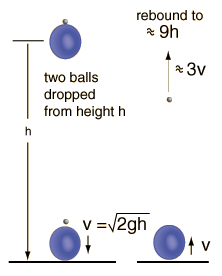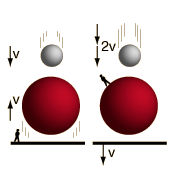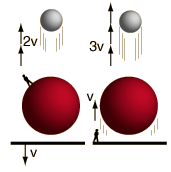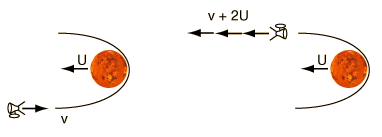Double Ball Drop
 |
If a light ball like a ping-pong ball is dropped along with a heavy ball like a large superball, the small ball rebounds with a remarkably high velocity, theoretically approaching three times the velocity with which the balls strike the surface. The analysis involves the nature of head-on elastic collisions and in particular the case of a light projectile hitting a heavy target. Slingshot orbits used in space exploration have features in common with this situation even though the objects involved never touch each other. The rebound velocity of 3v for the small ball implies that its kinetic energy is nine times its incoming kinetic energy since the kinetic energy is proportional to the square of the velocity. Since the gravitational potential energy is proportional to the height and the kinetic energy is all converted to potential energy at the peak of the motion, it will rise to height 9h. |
Collision concepts
| HyperPhysics***** Mechanics | R Nave |



